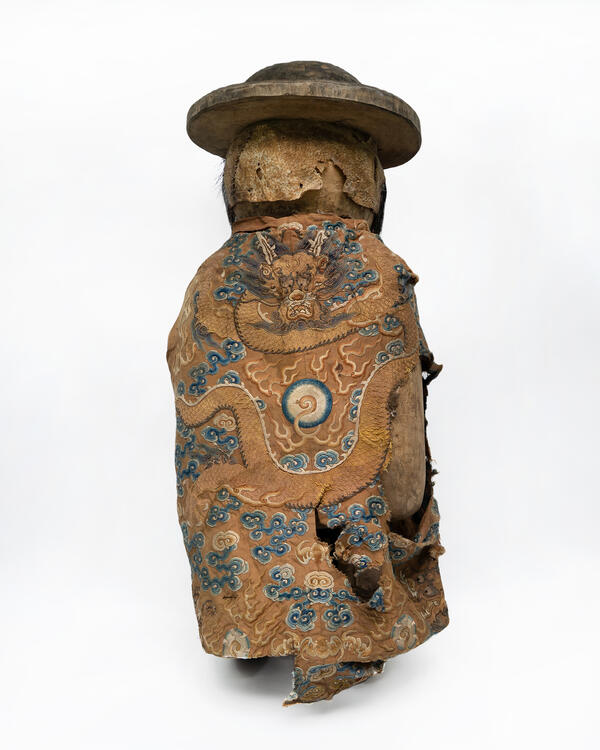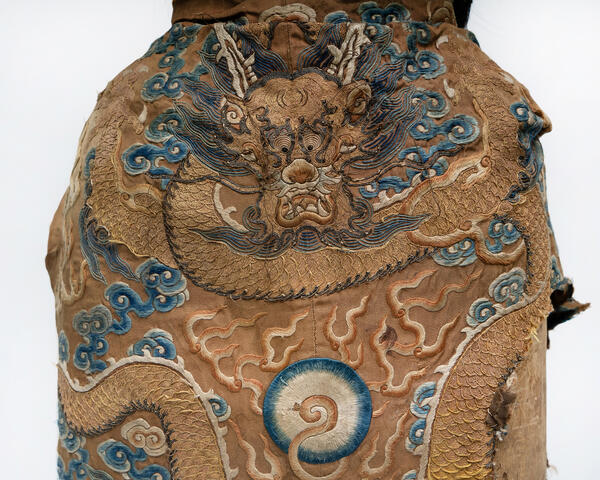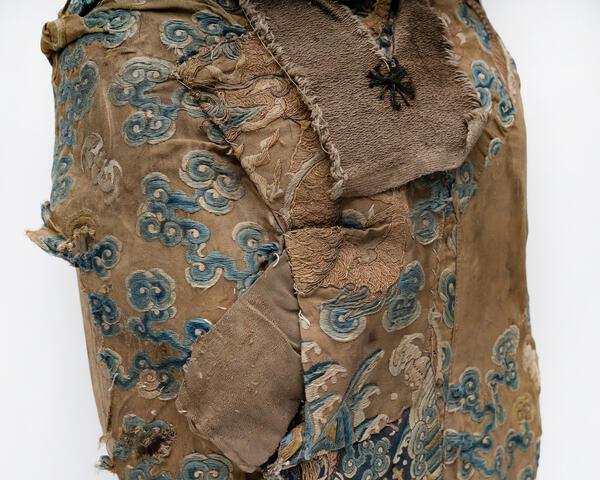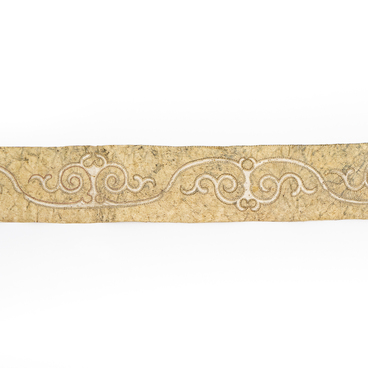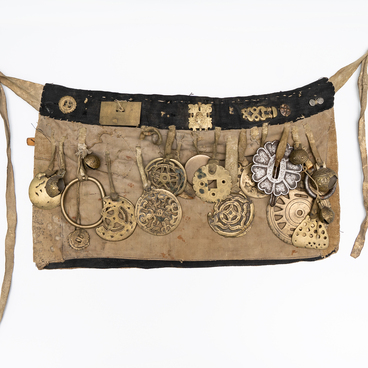The ritual sculpture of Panyan, or Panyo, was the seat of the soul of the deceased. The craftsman cut down the doll presented in the exhibition from a wooden monolith. This anthropomorphic figure is dressed in a kind of robe made of brown Chinese silk, embroidered with blue, brown and golden threads. It has a peculiar tucker made of brown cotton fabric tied under its neck with an embroidered solar sign.
The doll’s face is flat, it was made with an even cut, the forehead is protruding; the master used the technique of incised carving to create a narrow mouth. Two deep cracks run along the left side of the nose and to the corner of the mouth. Two black beads of eyes are located under the forehead. The forehead and face were framed by strips of long-haired fur, which is preserved only around the cheeks. The master sewed a wide strip of leather to the occipital part, on which there are tears.

